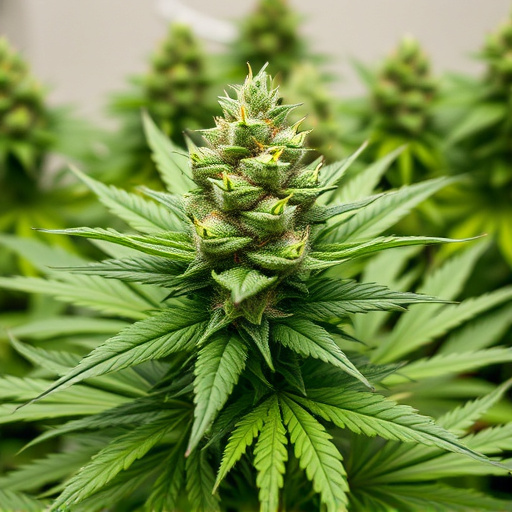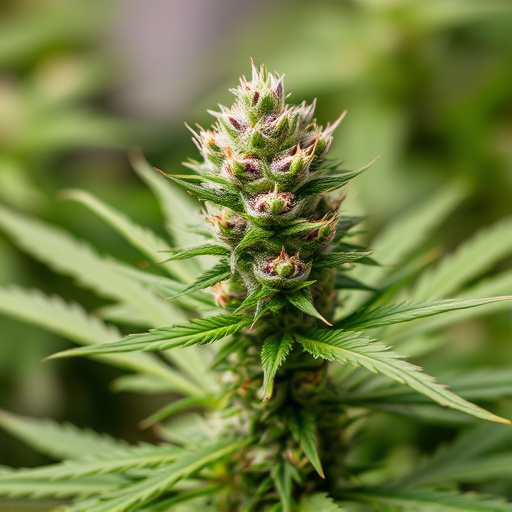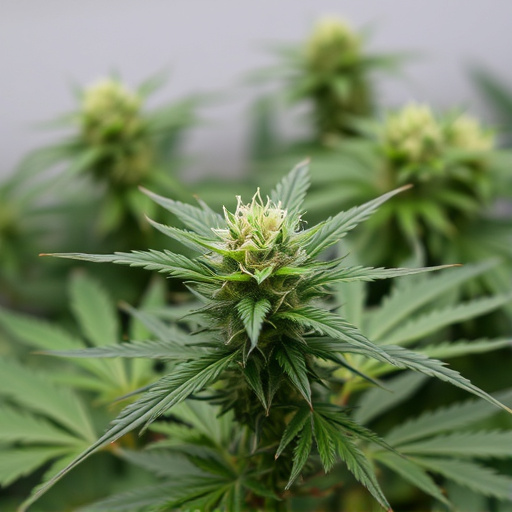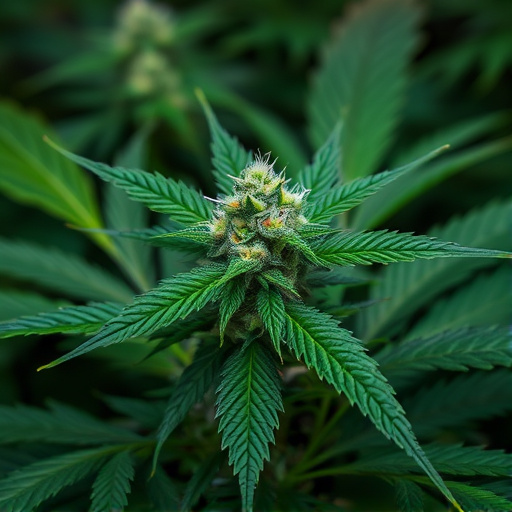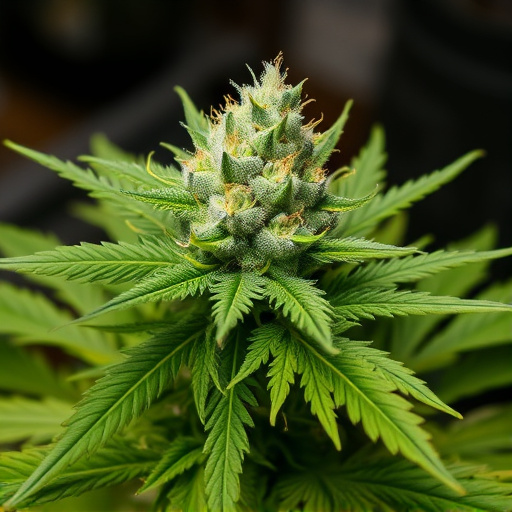Cannabis flowers contain a complex mix of chemical compounds, including cannabinoids (like CBD and THC), terpenes, and flavonoids, that interact with the endocannabinoid system (ECS) in mammals. Different strains vary in their cannabinoid profiles, resulting in unique effects – from anxiolytic and anti-inflammatory properties to euphoria and increased energy. Terpenes further enhance these effects, offering calming or uplifting sensations. Understanding these interactions allows users to choose strains that align with desired therapeutic outcomes, such as relaxation, stress relief, or enhanced creativity.
Cannabis flowers have long been renowned for their therapeutic potential, with mood and emotional regulation being key areas of interest. This article delves into the intricate interplay between cannabis compounds and the human endocannabinoid system, shedding light on how this connection influences our mental state. We explore the role of terpenes in modulating mood, providing insights into the diverse effects of various cannabis strains. By understanding these mechanisms, individuals can make informed choices regarding their well-being and harness the therapeutic benefits of different cannabis strains and their unique chemical profiles.
- Understanding Cannabis Compounds and Their Interaction with the Endocannabinoid System
- The Role of Terpenes: How They Contribute to Mood and Emotional Responses
- Exploring Different Cannabis Strains and Their Specific Effects on Mood and Emotions
Understanding Cannabis Compounds and Their Interaction with the Endocannabinoid System
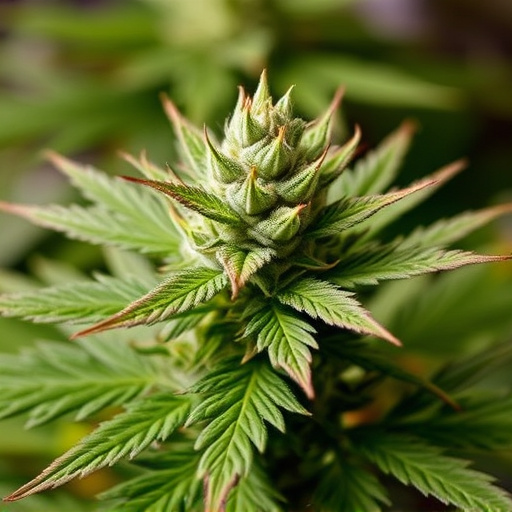
Cannabis flowers contain a complex mix of chemical compounds, most notably cannabinoids, terpenes, and flavonoids. These compounds work together to create the unique effects associated with different cannabis strains and their various therapeutic applications. The endocannabinoid system (ECS), present in all mammals, plays a key role in regulating mood, memory, pain perception, appetite, and immune function. Cannabis interacts with this system by binding to cannabinoid receptors, primarily CB1 and CB2, which are found throughout the brain and body respectively. This interaction can modulate neurotransmitter release, influencing neural pathways that control emotional states and cognitive functions, ultimately affecting how individuals perceive and respond to their surroundings.
Different cannabis strains vary in their cannabinoid profiles, leading to diverse effects. For instance, strains high in CBD (cannabidiol), a non-psychoactive cannabinoid, are known for their potential anxiolytic and anti-inflammatory properties, while those rich in THC (tetrahydrocannabinol) can induce euphoria and alter perception but may also increase anxiety in some users. Terpenes, aromatic compounds also present in cannabis, further contribute to the complex interplay of effects by influencing both the potency and the specific sensations associated with different strains. Understanding these interactions offers valuable insights into how cannabis affects mood and emotions, guiding users in choosing strains that align with their desired therapeutic outcomes.
The Role of Terpenes: How They Contribute to Mood and Emotional Responses

Terpenes, a diverse class of aromatic compounds found in cannabis flowers, play a crucial role in modulating mood and emotional responses. These volatile oils, responsible for the distinct flavors and aromas associated with different cannabis strains and effects, interact with our endocannabinoid system (ECS), which governs various physiological processes, including mood regulation. The specific terpenes present in a particular strain can significantly influence how an individual perceives and responds to its effects. For instance, myrcene, often prevalent in indica-dominant strains, is known for its calming properties, potentially reducing anxiety and promoting relaxation. On the other hand, limonene, common in sativa-rich varieties, is associated with uplifting and energizing effects, enhancing mood and cognitive function.
The complex interplay between terpenes and cannabinoids creates a unique profile that contributes to the diverse range of cannabis strains and their corresponding effects. Understanding this relationship offers insights into how different terpenic profiles can cater to specific emotional needs and preferences. Whether one seeks a soothing evening relaxation or an invigorating boost in creativity, terpene-rich cannabis strains provide a tailored approach to modulating mood and emotional experiences.
Exploring Different Cannabis Strains and Their Specific Effects on Mood and Emotions
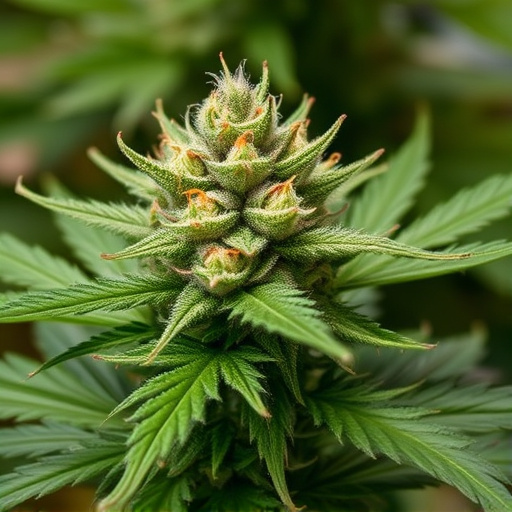
The impact of cannabis on mood and emotions is a complex interplay influenced by various factors, one of the most significant being the diverse range of cannabis strains available. Each strain possesses unique chemical compositions, primarily defined by its cannabinoid profiles, such as THC (tetrahydrocannabinol) and CBD (cannabidiol), which contribute to distinct effects on the mind. For instance, high-THC strains are often associated with euphoria, increased sociability, and heightened sensory perception, making them popular for recreational use. In contrast, CBD-rich varieties are gaining attention for their potential mood-stabilizing properties, offering a calmer experience without the psychotropic effects of THC.
Exploring different cannabis strains allows individuals to tailor their experiences based on desired outcomes. Sativa strains, known for their uplifting and energetic effects, may enhance focus and creativity, making them popular among those seeking a boost in productivity or social interaction. Indica strains, on the other hand, are renowned for their relaxing and sedative properties, which can promote tranquility and alleviate stress, making them preferable for evening use or to unwind after a long day. Hybrid strains, combining traits from both sativa and indica, offer a balanced approach, catering to versatile mood and emotional needs. Understanding these strain-specific effects empowers users to make informed choices, ensuring cannabis experiences align with individual preferences and desired mood alterations.
Cannabis flower’s impact on mood and emotions is a complex interplay of compounds, notably cannabinoids and terpenes. Understanding these elements and their interaction with the endocannabinoid system is key to navigating the various cannabis strains and their distinct effects. Whether seeking relaxation or energy, knowing the specific terpene profiles and cannabinoid concentrations in different strains empowers users to make informed choices, ensuring a more personalized and controlled experience. By exploring these nuances, we can harness the potential benefits of cannabis for mood enhancement while minimizing any adverse emotional responses.




